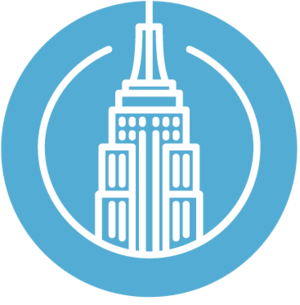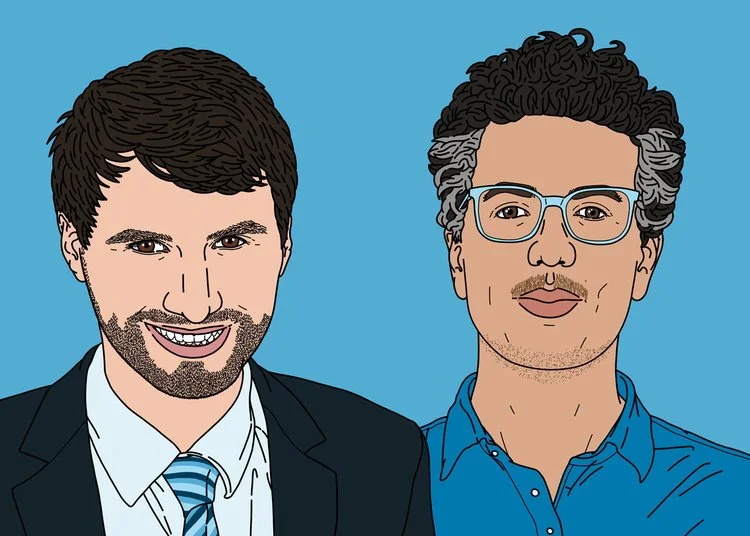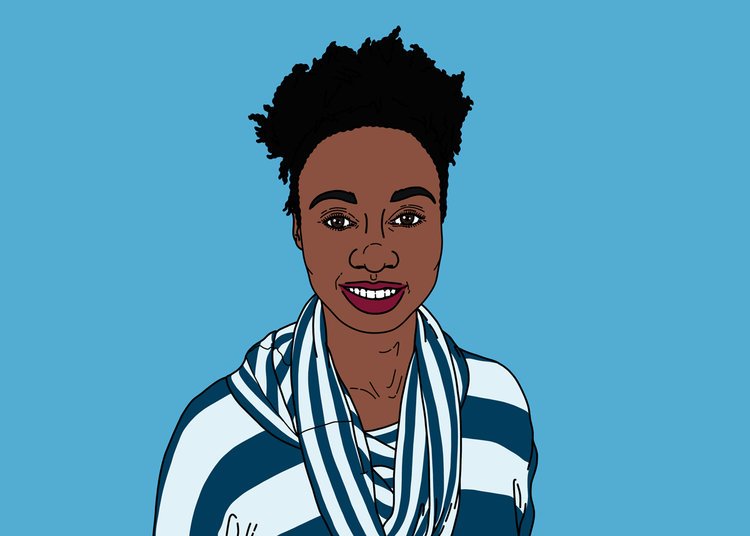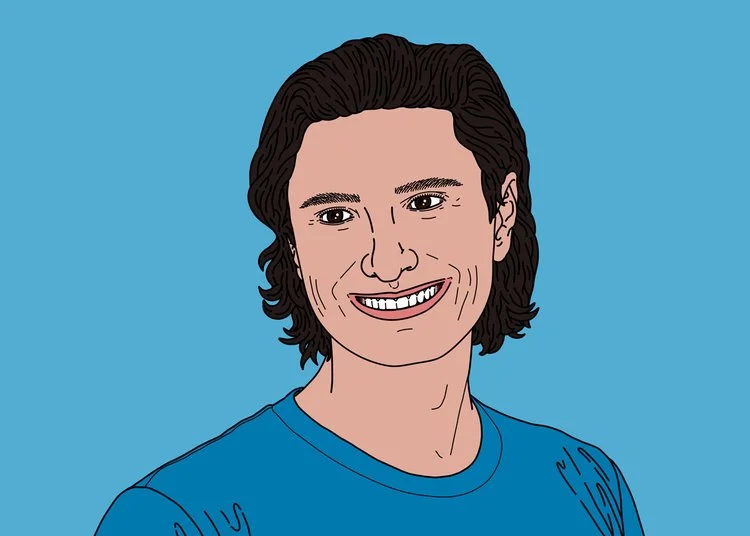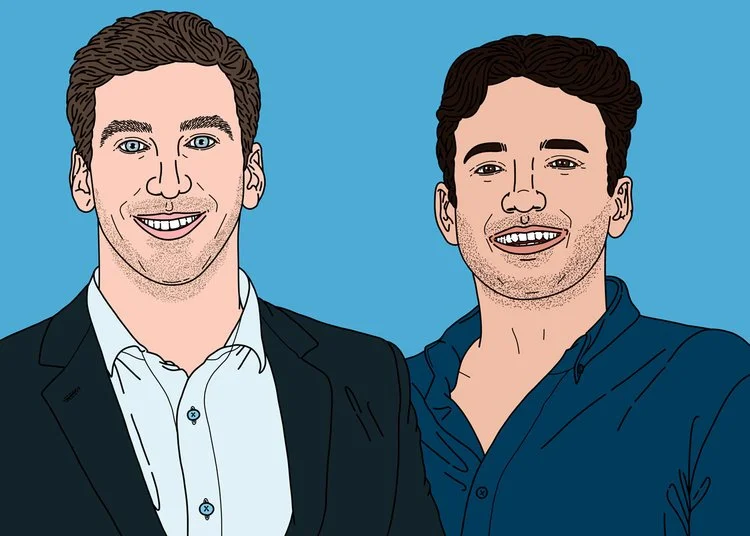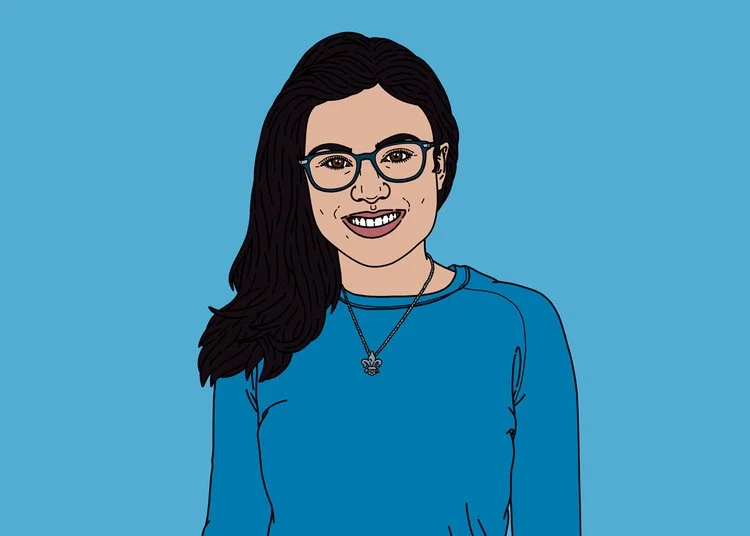Five Transit and Mobility Companies to Watch
New York City’s subway moves approximately 5.7 million people a day, a fact that sets us apart from other American cities. However, the subway and our broader public transportation network are faltering. In order for our city — and the tech community — to continue flourishing, our public transportation system must be improved and expanded. At the same time our city and state policymakers are currently exploring ways to address the transportation crisis, New York’s tech companies are simultaneously developing technologies that can improve our infrastructure.
That’s why, last week, we hosted a forum to bridge the two conversations. We welcomed New York City Council Speaker Corey Johnson and a panel of tech leaders to discuss the ways the sector can (and already does!) work with government to keep our transportation system moving. We covered lots of high-tech trends — autonomous vehicles, real-time street intelligence, data mapping — as well as some low-tech fixes — dedicated bike and bus lanes and congestion pricing. The key takeaway was this: innovation can’t stand alone. Public policy needs to work in collaboration with technology as a supportive and responsive partner. That’s how new ideas — and even old ones — flourish.
In that spirit, this month’s Companies to Watch features five transit and mobility startups working to improve the ways we move around the city.
CLEARROAD
What does your company do?
ClearRoad CEO Frederic Charlier and COO Paul Salama: ClearRoad is software platform to handle the transactions for road usage pricing — a type of micro-tolling that charges vehicles in incremental amounts based on how much they drive. ClearRoad accomplishes this by pulling from the vehicle location and mileage provided by connected car technologies that are becoming more ubiquitous (i.e. requiring minimal, if any, physical infrastructure). We’re currently running statewide projects in Washington and Oregon with drivers paying by the mile instead of gas taxes, and we’re expanding to use our platform for congestion pricing.
Why did you found your company in NYC?
FC: A pure coincidence initially. I was living in New York at the time of ClearRoad’s ideation. It turns out it was a good decision — New York has a very dense startup ecosystem with a lot of opportunities to do business and to network.
Many groups are focusing on getting people off roads to improve mobility and productivity. ClearRoad doesn’t want people off roads, you just want road use to be more efficient. Where did that idea come from?
FC and PS: It’s just basic economics. In any city, there’s competition for a limited amount of space, and the question is always: how do we allocate it? For almost a century, cities have been giving space over to cars, for free. Cars are just about the least efficient way to move around. That is, until empty autonomous vehicles come, so there’s some urgency to get the right pricing and policies in place soon. This is about improving overall mobility — more money to buy trains, reducing cars in the street for faster, more reliable bus trips, more bike lanes…
You currently operate in Oregon and Washington State. where are you most excited to work next?
FC and PS: Now we’re talking about a different, though related, problem: how do you fund the roads themselves when gas taxes aren’t enough? And that’s universal across the States. We’re in this exploratory phase where it’s not clear which vehicle segment is going to be connected first. Is it trucks, which disproportionately impact the roads, or the Ubers and Lyfts, which are already sharing their data with cities and states? My money is on electric vehicles. In Utah, they’ve already started charging EVs a yearly fee, which is…not great from an environmental perspective. But next year the state wants to give those drivers the option to pay for their actual driving instead, which is fairer!
You’ve spent your entire career working at the intersection of transportation and efficiency. What inspired you to become a founder?
FC: I was working at a large tolling company and built an E-ZPass-equivalent system across the entire French highway network. After that, they sent me to work in the Western Hemisphere’s first road usage charge program, in Oregon, where drivers paid for their mileage instead of gas taxes, based on vehicle data collected via cellular and Bluetooth. That was a game-changer for me. It meant the tolling industry as I knew it was doomed, and when I didn’t get the buy-in internally, I set out to start ClearRoad to solve the challenges of this new paradigm.
New York State has proposed congestion pricing cars, trucks, and for-hire vehicles in congestion zones as a means to improve transportation within New York City. How does congestion pricing complement, or work against, ClearRoad’s thesis?
FC and PS: It’s absolutely aligned! Congestion pricing is just one of the types of road usage pricing systems that ClearRoad can do, and it’ll be great for getting people to drive a little less, while raising some money for the MTA! We’re a little worried, though, that the State is going to use the old technology that requires people to still have the same E-ZPass twenty years from now, costing hundreds of millions of dollars to build and maintain those readers and cameras. Most new cars have GPS and cell service built in. Let’s use those, and maybe we can do something like surge pricing, except where the city and the public get the benefits.
What brought you to New York?
FC: Work. I came as an expat for a tolling company four years ago.
What does mobility mean to you?
FC: A collection of modes of transportation to get from A to B efficiently, while enjoying the ride.
What’s your favorite subway stop/station?
FC: Rockaway Park Station - Beach 116 Street.
Dream road trip?
FC: Yellowstone National Park to Yosemite National Park in an RV.
Would you rather always find a parking spot, never sit in traffic, or always have a train waiting in the station?
FC: Always have a train waiting in the station.
How do you get to your office?
FC: By bike (when weather permits).
Where do you get your favorite pizza slice?
FC: Uncle Jimmy’s Pizzeria in Sunnyside.
Where do you get your favorite bagel?
FC: Not a big fan of bagels. Shame on me.
What is the best New York waterfront?
FC: The Long Island City waterfront, definitely.
What’s your favorite New York building?
FC: The Chrysler Building.
What’s the best place in New York for a coffee or lunch meeting?
FC: Norman, but it's closing this week. It's such a great space at A/D/O; I'm sure I'll enjoy whatever restaurant replaces it.
FAIRFARE
What does your company do?
FairFare founder and CEO Adero Davis: FairFare is a personalized direct booking, intelligent ride-hail marketplace app. It’s powered by proprietary algorithms, which matches users to efficient solutions that are initiated by user preferences, and it functions as a marketplace that cross-matches personal transportation preferences with lifestyle spending habits. Thereby, becoming a direct asset to businesses, government, and consumers. We get you from point A to point B in the most efficient manner possible.
Why did you found your company in NYC?
AD: I’ve been living here for 16 years, my cofounder is a Brooklyn native, and the frustration was felt here more than anywhere else we traveled. With more than five ride hail companies operating in NYC, it made sense to start at home and pilot here.
The idea for FairFare came to you in Nairobi, Kenya. As you scale FairFare in New York, what lessons from abroad do you lean on?
AD: I leaned on the need to improvise and execute regardless of the friction points that are not accounted for — and can’t be — until you’re in the field. Surveys, focus groups, and research are all great tools to prep but nothing beats real time in-the-field testing. There are so many things that can and do go wrong, and staying focused on execution despite unforeseen circumstances has been the my biggest takeaway I go back to.
The idea behind FairFare is so simple, so brilliant — like the Expedia for ride-sharing. How could a customer not adopt the app? What’s been a hurdle for you as FairFare acquires customers?
AD: The biggest hurdle as it relates to customers isn’t so much adoption as it is reminding them to use it — behavior change. Users tend to have their go-to ride-hail app so we have to contend with changing that behavior. Our other challenge is getting the smaller ride-hail companies to get on board.
As the market evolves what kind of role do see ride-sharing playing in the broader transportation space?
AD: I believe ride sharing will become the mode of transport for urban dwellers because it really is just too annoying driving in the city. I also think ride shares will be more utilized for two-fare zones, as its safer and quicker, but there’s more work to do on pricing so it’s affordable for not just for professionals, but for every demographic that has to go from point A to point B in NYC. Linking with improved public transportation initiatives and the autonomous vehicle wave (which is really fun and being tested a lot in German), I think FairFare’s platform can withstand the evolutions the space will undergo.
You studied international affairs and worked for the United Nations. How has this exposure to international cooperation and public policy informed your vision for mobility at scale?
AD: My background in international affairs fuels everything that I do, despite what my parents initially thought. In starting FairFare, I knew it was something I’d like to introduce internationally. For example, in Kenya, there’s the Matatu (Buses) culture, where there are so many operators and a high technology adoption rate. Transportation is the second largest cost associated with all households, regardless of socioeconomic status, so I felt starting FairFare could aid in urban development internationally, and that’s the goal.
What brought you to New York?
AD: The rhythm.
What does mobility mean to you?
AD: A type of physical freedom.
What’s your favorite subway stop/station?
AD: 59th St – Columbus Circle
Dream road trip?
AD: Cross county to California in a cool RV.
Would you rather always find a parking spot, never sit in traffic, or always have a train waiting in the station?
AD: Always have a train in station ready to go, after the required 15 seconds of door opening.
How do you get to your office?
AD: Train.
Where do you get your favorite pizza slice?
AD: New Park Pizza in Howard Beach.
Where do you get your favorite bagel?
AD: Bergen Bagels.
What is the best New York waterfront?
AD: The new and improved Brooklyn Bridge Park — awesome views of the city.
What’s your favorite New York building?
AD: I love the architecture along Convent Avenue in historic Hamilton Heights. I think they are the best in the city.
What’s the best place in New York for a coffee or lunch meeting?
AD: Massawa near Columbia University, or Gotan Tribeca.
TARFORM
What does your company do?
Tarform co-founder and CEO Taras Kravtchouk: Tarform’s mission is to set a new standard for two wheeled transport by developing fully electric, premium motorcycles, using sustainable materials and AI technology.
Why did you found your company in NYC?
TK: The reason Tarform was founded in Brooklyn is due to the spirit of innovation, energy and talent around this city. People in this city come together around big ideas.
It seems like everywhere we look, bike and scooter companies are popping up to tackle the problem of mobility. Tarform is one of the first looking to innovate in the motorcycle space. What drew you to the motorcycle? What makes it the vehicle of choice?
TK: Being a product designer working in tech, and building vintage motorcycles, this became a fusion of passions. A convergence of fields such as aesthetics, ecology, and technology suddenly overlapped and was the inspiration behind Tarform. I noticed that little innovation has happened in the motorcycle industry, making the time very interesting to create a new kind of vehicle that is not only electric but are also made using the cleanest materials available and with the rise of 3D printing it opened a new world of opportunities within industrial design.
Besides the motorcycle, we want to showcase what the factory of the future looks like and how we can combine green design with aesthetic beauty. This vehicle goes beyond just transportation and mobility, it is also a sensory experience. Apart from the visual appeal, the texture of the materials we use are close to nature. For example, we use flax seed fiber to reinforce the side panels, which is biodegradable. The electrical powertrain provides an instant take off and a sensation of flying, as well as elegant simplicity in how it operates. No gearbox, no noise, no oil, no fire. Besides the design and technology, it’s simply the most efficient and joyful way to get around a city like New York.
In the smart city conversation, how do you see Tarform’s smart connectivity working to improve efficiency?
TK: As more vehicles reach new levels of autonomy, it is important to build in connectivity into the bike for several reasons. The main reason being safety, where the bike will be equipped with proximity sensors to warn the rider of any potential danger, as well as communicating with other cars on the road. Another way of leveraging existing technology is by using image recognition and machine learning to track traffic and analyze the road. The rider would get alerted via haptic feedback through the handlebars, thus creating less distractions and being more focused. At the end of the ride, the Tarform motorcycle will analyze the trip and provide feedback.
You regularly consult and advise early stage companies within the realms of strategy, design, and product. Do you see any trends emerging, particularly in the mobility space?
TK: The last mile movement is a rapidly growing market and there are new companies emerging in that space frequently. We are based at New Lab, a center for innovation in Brooklyn, so I get to try a lot of cool stuff around hardware and tech. Today I tried a wheeled Segway robot that followed me after taking a photo and speaking to me in an android voice. It has a top speed of 10mph with a range of 15 miles. Maybe that is the future of mobility.
You’re originally from Stockholm; have worked in Bonn, Germany; and now call New York home. When it comes to transportation, what do these cosmopolitan cities have in common, what makes them different, and what have you worked to incorporate into Tarform?
TK: Besides different cultures and infrastructural layout of those cities, the way we transport within them are quite similar. The biggest challenge all of those cities have in common is the increasing amount of cars. We have to start to re-think the usage of large and inefficient vehicles in urban metropolitan areas. The first step is to accelerate the transition to EV vehicles so we can stop burning fuel from dinosaurs. The second step is to make vehicles smaller—this is where two wheelers could have a massive impact in solving congestion.
What does mobility mean to you?
TK: Being able to move where I like freely and in that process, enjoy it.
What’s your favorite subway stop/station?
TK: Mayakovskaya in Moscow is the Rolls Royce of subway stations.
What brought you to New York?
TK: I moved to NYC seven years ago from Stockholm to launch our design agency in New York.
How do you get to your office?
TK: Walking or riding my custom Triumph Scrambler — until I get plates to the first Tarform production vehicle.
How do you get to your office?
TK: Walking or riding my custom Triumph Scrambler — until I get plates to the first Tarform production vehicle.
Where do you get your favorite pizza slice?
TK: Table89 in Park Slope.
What is the best New York waterfront?
DG: Brooklyn Bridge Park.
What’s your favorite New York building?
TK: The Guggenheim Museum.
What’s the best place in New York for a coffee or lunch meeting?
TK: DUMBO House.
THE FREE RIDE
What does your company do?
The Free Ride co-founders Alexander Esposito and James Mirras: The Free Ride creates and operates microtransit mobility solutions using large fleets of compact electric vehicles and a mobile app. Paid for by public and private groups depending on the area, the rides are completely free to passengers.
Why did you found your company in NYC?
JM: Alex and I were living and working in NYC when we started the company as a side project.
You both grew up in the Hamptons, a very distinct part of the broader New York ecosystem. How did Long Island inform your views about mobility, marketing, and how they intersect?
AE: East Hampton was where the business started but also how the idea was sparked. There was an over-crowded parking lot at Main Beach and then an underutilized lot in town about a mile away. We initially kicked around the idea of doing a beach bus, but a couple years later thought, “What if we made it free?” If we could use electric cars to cut out the cost of fuel and help the environment, and work with advertisers to brand the cars, then we could provide this service at no cost to the user. It worked! James and I essentially created a first/last-mile transportation solution for the town.
The Free Ride operates in handful of cities throughout New York, California, and Florida. How are New York’s transit challenges unique? What could New York learn from other locations?
AE: We’ve learned a lot by expanding, and it’s exciting to see how cities are dealing with the problems of congestion and first/last mile gaps.We’ve run city-funded pilot programs in various areas, and it’s been amazing to see the business take shape in different communities. In NYC, I think there could be a great opportunity connecting people with the ferries. As traffic continues to grow, we need to get people out of their cars. The ferry is a great option, but the terminals are often too far to walk to. If we can connect people to the ferries (for free!), I’m confident more people would use them.
Currently, transit contracts account for about 25% of your business. How do you see your role within the broader transit space changing in the coming year?
AE: Transit services is the fastest growing area of the business and we have a few forces working in our favor. We fit into a great first/last mile space that many cities are grappling with. The more traditional ride-share services are great at moving people around, but studies have shown that they’re pulling people from mass transit, that most people aren’t sharing these rides, and that congestion has increased significantly. We really focus on creating local jobs, training our drivers, and creating a passenger experience that people want to be a part of. With that, ridership is high (the FRED program with Civic San Diego is busy all the time), we’re reducing vehicle miles of travel (VMTs), and connecting more people with mass transit. The service is also a great way to connect with or get people around campuses, malls, large parking lots, etc.
At the end of 2018 you were selected as one of URBAN-X’s ten urban tech startups. How is the accelerator helping you grapple with the unique challenges of operating within cities?
AE: The accelerator has been great in many ways. Our team has gotten together on numerous occasions to focus on big-picture goals. We’ve made some great connections with community boards and private developers and set-out a game plan for how we can mold and craft the service to help with mobility. Every city is a little bit different, so navigating through the various committees and then structuring the services to meet the needs of the areas has been a challenge. URBAN-X has helped us to narrow this focus in a way that provides clear value to our stakeholders while still offering the same flexibility that makes the service work.
What does mobility mean to you?
JM: Socially-responsible convenience and freedom to move throughout the city where I live and work.
What’s your favorite subway stop/station?
JM: The Union Square station is big in a true NYC subway station way and always makes me feel like I have options to get anywhere, which you can't say about many others
Dream road trip?
JM: California to Patagonia.
Would you rather always find a parking spot, never sit in traffic, or always have a train waiting in the station?
JM: Always have a train waiting. Which I believe would help the other two as well.
Where do you get your favorite pizza slice?
JM: La Capannina in Wainscott, NY.
Where do you get your favorite bagel?
In East Hampton, Goldberg’s. In NYC, I’m still searching for the one.
NUMINA
What does your company do?
Numina co-founder and CEO Tara Pham: Numina is a data utility for more responsive cities. With a proprietary computer vision-based sensor that mounts to light poles, Numina measures all types of street-level traffic to deliver volume counts, paths, and other patterns of pedestrians, bicycles, cars, trucks, buses, dogs, you-name-it. Numina never collects any personally identifiable information and from Day 1 has been committed to providing intelligence without surveillance. Numina data helps city planners, mobility companies, and other enterprises design places for people instead of just for cars.
Why did you found your company in NYC?
TP: We actually started our company in St. Louis, Missouri. We moved our HQ to NYC because we love its burgeoning urban tech ecosystem, and we wanted to work in a community as diverse as the cities we serve.
In a dream world, where policy is fully open to product, what would that application look like?
TP: Constraints foster creativity. The best products come from having to really know your customers’ needs and the reality of their work flows, regulatory environments, physical limitations, etc. One reason Numina is resonating so powerfully with city customers is because most technology companies come to them with a solution they originally developed for a different kind of customer, and when civil servants use Numina, it’s sometimes the first time they’ve felt a product was purpose-built for their use case. We already go far above and beyond the minimum industry standard or regulation when it comes to things like privacy protection. So, truthfully, I don’t think our product would work differently in an ideal world. In fact, it might have been harder to anticipate certain real-world challenges or worst-case scenarios, and we might have accidentally under-developed and under-applied our values on issues like personal privacy.
Numina’s technology is installed in city’s across the country, with more regions in the planning stages. What is a challenge you’re looking forward to tackling? Either in a specific location, or of a specific type?
TP: I look forward to deploying more international projects — because it’s rewarding to face new cultural contexts and technical challenges, overcome them, and then have entire new markets open to you. I also look forward to the challenges of integrating our data into other applications, and learning what higher-order insights we can deliver when combining our intelligence with third-party datasets. We’re very excited about our new GraphQL API, as our next big step toward making the real world queryable.
Before founding Numina, you studied international studies, public health, and mechanical engineering. How do those three very different disciplines inform how you think about mobility?
TP: I was basically creating a makeshift urban planning curriculum at a school that didn’t offer that major. It’s a field that is inherently multi-disciplinary. For example, you can’t actually get anything built if you don’t understand the policy landscape. And your transportation choices are a bigger determinant of your health than density, race, education, and income; transportation's impact on your quality of life cannot be overstated. It’s all about making people’s lives better at the infrastructural level.
How does New York City, specifically, inspire you to empower cities with data?
TP: What’s awesome about New York City is the sheer scale. You look at a city that spends $4 billion a year on trash management, and you realize any gains mean millions of dollars in savings. You can do something that changes 0.4% of people’s transportation experiences in a day, and it’s 50,000 people’s commutes. Improve something about New York City Housing Authority and realize it affects a population the size of Miami’s. There’s so much to solve, and when you start trying to chip away at these problems, you see how much it matters. As a city nerd, I am in awe of NYC everyday.
What brought you to New York?
TP: Our company joining the first cohort of the URBAN-X Accelerator.
Dream road trip?
TP: I love road trips and have driven through much of the U.S… so I think right now I’d love to do the Trans-Siberian Railway, or motorbike to Patagonia or in Vietnam.
Would you rather always find a parking spot, never sit in traffic, or always have a train waiting in the station?
TP: Ha, no contest. Train every time.
Where do you get your favorite pizza slice?
TP: Sadly, I don’t eat dairy!
Where do you get your favorite bagel?
TP: Bagel Express at 25th and 3rd, don’t @ me
What is the best New York waterfront?
TP: Not sure it’s objectively the “best,” but I love East River Park because I would run there when I first moved to NY.
What’s the best place in New York for a coffee or lunch meeting?
TP: Not trying to give away my spots!
All illustrations by Elly Rodgers
NEW YORK CITY - JUNE 7, 2018:by Ryan DeBerardinisShutterstock.com
